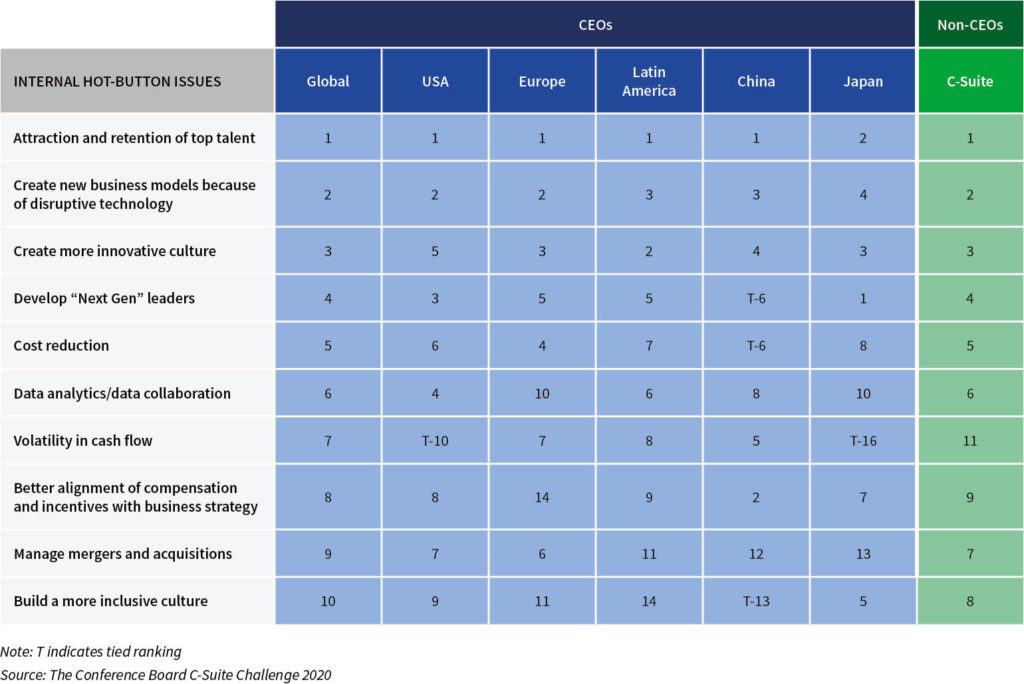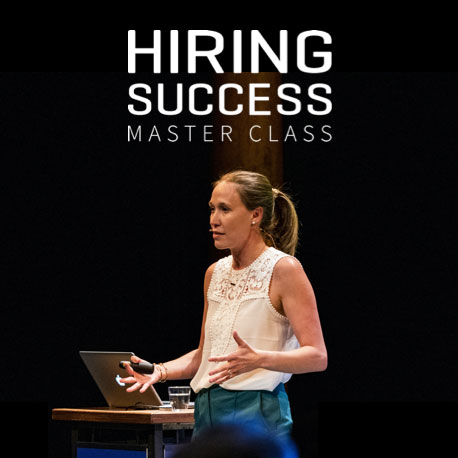Why recruit globally?
A recent survey by The Conference Board of over 1,500 executives around the world found that, “Regardless of a company’s location or size, attracting and retaining top talent ranks as the number-one internal stressor for CEOs and other C-Suite executives globally in 2020.” Some sources even claim that company executives are losing sleep over the topic.

Finding, optimizing and retaining the right talent is among the biggest pain points faced by company leaders in 2020. Because of these ongoing skill shortages, there is a global war for talent, which might be better thought of as a global war for skills . Companies need the right skills in the right place at the right time. Hiring and retaining the best employees has become one of the top challenges for leaders worldwide. One way to maximize the potential labor pool is to recruit globally.
How to grow globally
There are three main ways organizations can develop a global workforce. Organizations can build the talent pool by hiring and developing employees in local markets. This takes time and requires help from local experts. Alternatively, companies can buy the talent they need by hiring from competitors or buying a company or companies in the local relevant market. This can backfire if there is a mis-alignment of cultures or values, which can happen easily if a company is not familiar with the market.

Companies can also deploy talent to new areas by moving employees or business units to other parts of the world. This can be very expensive and disruptive but can help give the company a trusted resource on the ground in the new marketplace that can help grow the organization’s presence from there. International assignments or extensive global travel are alternatives to deploying talent but have their own specific risks and issues.
Segment your market for success in global talent acquisition
What works to recruit and retain top employees in the United States is not the same as what would be successful in Europe, Asia or other locations. A blanket, “one size fits all” approach simply will not work for global talent acquisition. Each market that a company is recruiting in requires its own unique strategy and messaging. Talent attraction, compensation, benefits, and employee values can be vastly different from one location to another. In marketing terms, we need to segment the market and understand the drivers for each segment. Then customize the strategy to address those drivers.
Changes to global talent acquisition—technology advances
Advancements in technology affect global talent acquisition in several ways. Applicant systems make it easier than ever to scale hiring across multiple languages as well as multiple legal and compliance requirements. Social media makes it easy for applicants and employees to share their experiences online— good and bad— with large audiences around the world. The internet, job boards, social media, and online advertising, have expanded candidate awareness of companies on a global scale. It has also increased the reach of companies to new markets, including labor pools that they’ve never had access to before.
The corresponding increase in data and analytics offer companies insights to candidates thinking. We now have data available to us that can show where candidates originate from, why they convert to employees, why they stay and why they leave. This data is crucial for developing and enhancing the global talent acquisition strategy in specific markets.
Another way that technology has impacted global talent acquisition is in the development of the gig economy. It is now very easy for employers to hire freelancers with a specific skill set for a specific job, and multiple platforms have gained popularity by facilitating these gig assignments. On the flip side, it is also very easy now for potential employees to decide if they would rather freelance than be tied to a specific employer.
Training for success and retention
Global organizations need a multinational recruitment strategy that targets candidates based on employment values, market trends, talent acquisition law, and talent attraction methods and tools. The strategy should take into account these new ways of working as well as the varying levers that are important to employees in different markets.
Flexibility in how and where the work gets done is critical. Having flexibility to hire in multiple locations, as well as having a back up plan, can help companies hit their global hiring targets. If you are trying to find top notch software engineers, for example, the strategy should include multiple target locations, including remote work, in order to maximize the talent pool.

One of the risks described in studies is that our current workforce includes a mix of workers that have various skills and experiences that don’t necessarily align. Training our workforce to operate successfully in a global environment is one of the key challenges facing companies today, and goes hand in hand with the challenges of global talent acquisition. This goes back to thinking of our challenges as a shortage of skills, not just a labor shortage or shortage of bodies.
Let’s return to the example of hiring a software engineer. In order to maximize the labor pool, we want to consider candidates from multiple countries and we would like to be able to consider those who want to go into an office as well as candidates that are in a location where we do not offer a physical presence. Let’s say our top candidate, who we end up hiring, is a software engineer that is going to work 100% remote. Our primary objective now becomes to maximize the success of the new engineer and the team they are on. If that team is not used to working with someone that is fully remote there may be several communication issues that arise.
Blending a workforce between locations, cultures, generations, time zones and languages requires a better understanding of the skills needed to communicate and manage in a flexible and nimble way. If we skip this or gloss over the issues that come up in this new work environment, we will fail to maximize the productivity and success of the team, and possibly lose employees. If we continue in this same way, eventually projects will fail and we could lose customers.
Local expertise—the key to global talent acquisition success
It is essential for companies to consult with local experts to develop their talent acquisition strategy and how they execute that strategy in any markets they are operating in. Legal requirements can be tricky and extremely risky to maneuver without expert help. Different markets also have different expectations and values. Without local expertise it can be costly in time and good will to learn the nuances of recruiting in these different markets.
Recruiting in Europe or Asia is extremely different from recruiting in the United States. If you are unfamiliar with the differences in laws and norms regarding candidate interview and selection there can be a steep learning curve. Outside of the US it is quite normal for candidates to be asked (and to discuss) marital status, religious affiliation and details about their family life. These subjects are off limits to interviewers in the United States.

In Europe employment contracts are standard, with specific notice periods, often months, that need to be given in order to terminate employment from either side. This is very different from the United States where employment is considered “at will” and two weeks notice to leave your job is considered a standard. This can greatly impact the lead time needed to find a new employee and give ample time for them to give their notice and start a new role. There are also differences in compensation package expectations. For example, in Europe many job offers include a car allowance as a standard, where it is often seen as a perk in the United States.
The cultural differences in global recruiting can sometimes be quite subtle. In the United States it is quite common for candidates to apply to job postings online, while in Asia it is very uncommon. It’s much more common in Asia to find a job through personal and professional networking.
Local help can include legal help from a local attorney, reputable recruiting or management consulting organizations in the local market, local universities with strong alumni networks interested in partnering with employers, local networking referrals from employees, user groups or other local agencies (Chambers of Commerce or networking with other HR professionals through the Society for Human Resources Management (SHRM) are great resources).
Conclusion
The skill gaps that are causing the war for talent is likely to get worse before it gets better. Company executives and HR Leadership needs to be proactive in designing an overall global talent acquisition strategy that allows flexibility within labor market segments. While technology is a huge driver of these skill shortages, it can also be one of the key components to the overall solution.
Taking the time to understand the markets companies are recruiting in globally, and exploring new ways of working and new markets to operate in, can help a company build the skills in their employee population that will allow them to compete globally. Strategically including local experts in the design and execution of that strategy can help companies avoid costly recruiting and hiring mistakes.

 Enroll in the Master Class & earn 6 SHRM credits
Enroll in the Master Class & earn 6 SHRM credits